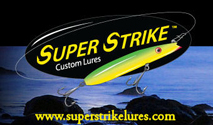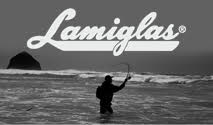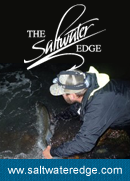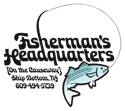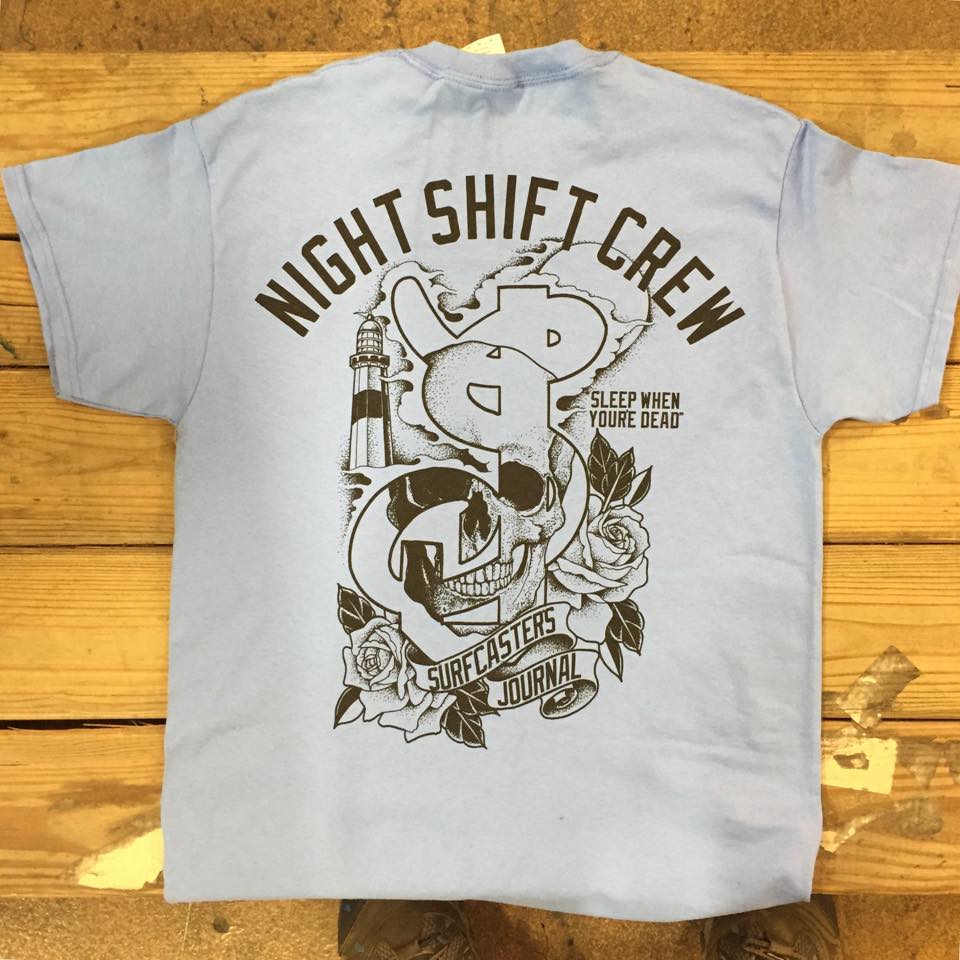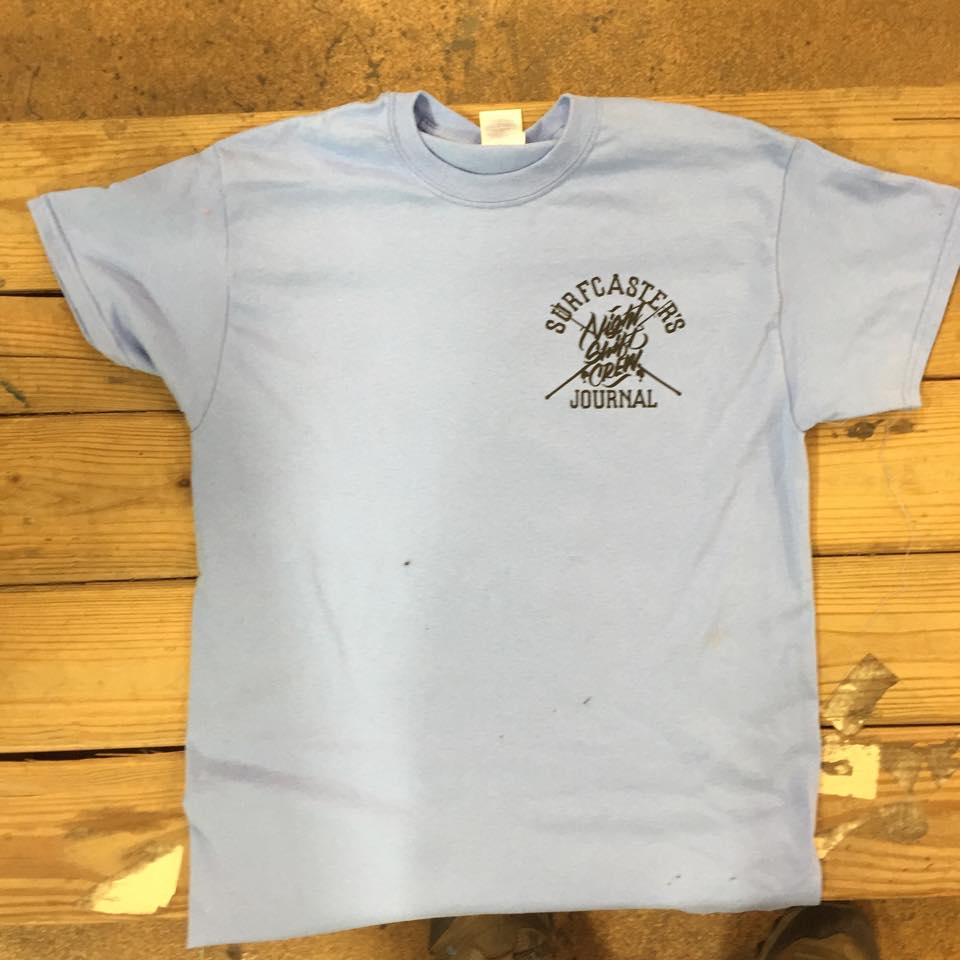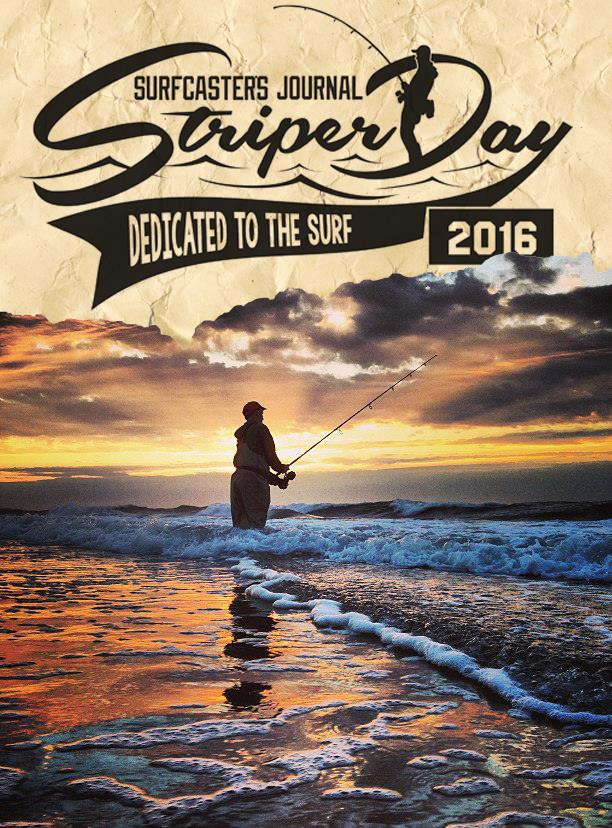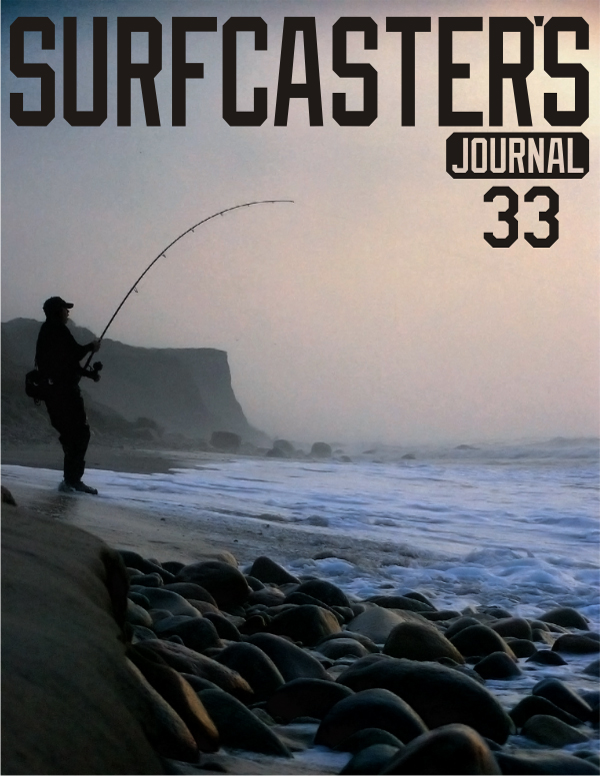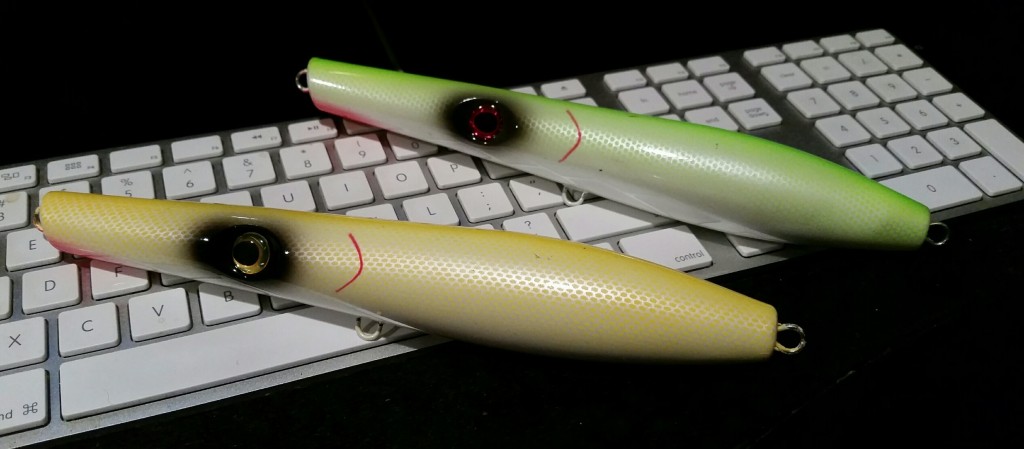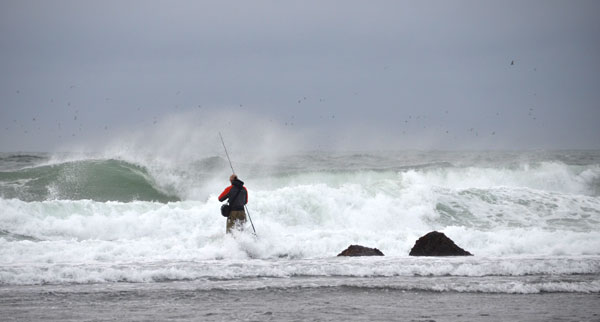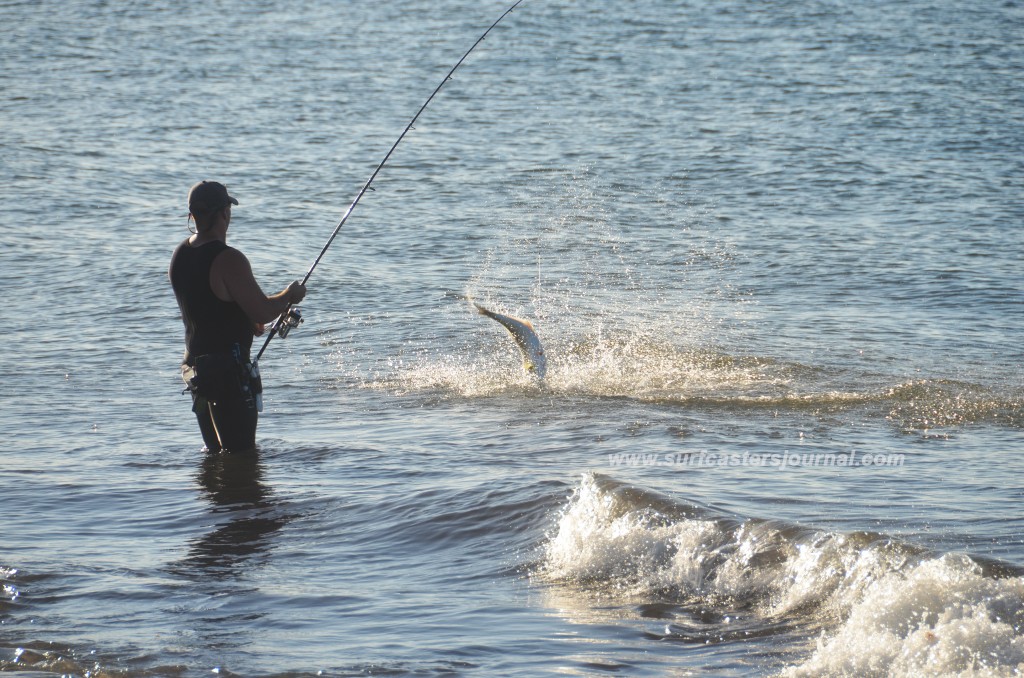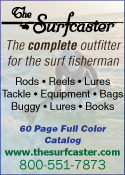The Midnight Rambler
John Papciak
A Fish (Not) Too Far

For most of the summer I’ve been having these chest pains. It felt like
draggers stabbing me in the chest. No, I don’t think I have coronary artery
disease. But I do have an acute fishing disorder. The stabbing pains were
felt whenever I’d see a Facebook post from Captain John McMurray’s of One
More Cast Charters.
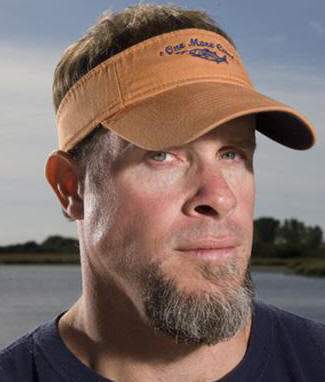
Many SJ readers here know of John. He is quite active in conservation and
was particular vocal this past winter when new bass regs were being
discussed in public hearings. John’s One More Cast has been taking people
inshore for bass for over 20 years. I might have the exact math wrong, but
about 12 years ago he also started to do more offshore trips. A few years
ago he went “all in” on the offshore thing and upgraded to a 33 foot
Contender and twin Yamaha 300s.
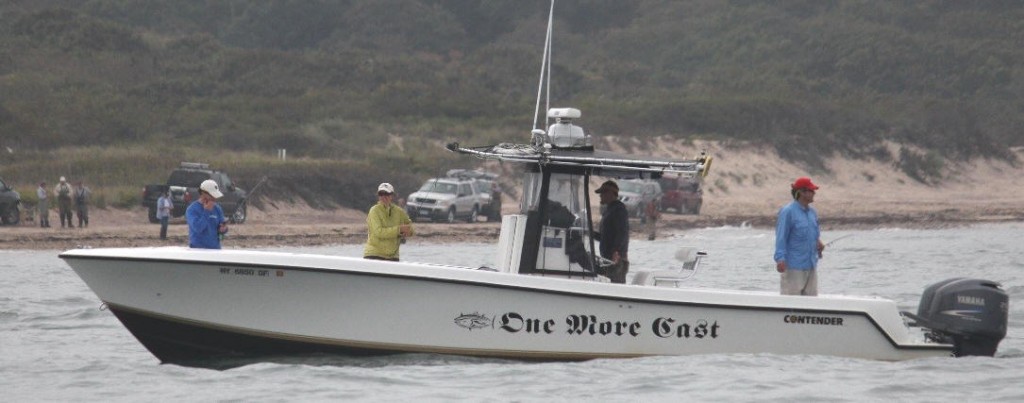
OK Ok. Enough about the boat. Most readers here are surfcasters and insist
“boat fish don’t count.”
Besides, when most people talk about offshore, it’s about overnight
chunking trips, or maybe trolling. I love both, but there is a reason why
I’m primarily a surfcaster.
I love seeing the fish. I love sneaking up on them. I love casting to them.
I love casting to a swirl and getting goose bumps thinking “Oh man, that
plug is gonna get hammered.”
And for me, fly fishing is along these same lines, just takes it to another
level.
When John McMurray started to do these offshore trips, he approached it so
very differently than your average 6-Pack charter. His business model (in
my opinion) is all about catering to a clientele who wants to do the same
kinds of things done inshore and surf – topwater lures, casting, and fly
fishing. It helps when the fish are quite a bit bigger and stronger than
your average bass or bluefish, even more so on a pound for pound basis.
So when I’d see Facebook posts with John’s clients holding yellowfins –
caught on popping plugs- it was quite painful. About a week ago, I
concluded I could take it no more. I shot him a text: “Dude, you’re killing
me with the photos, do you have any openings?” And wouldn’t you know it, he
shot me right back. “Actually, now I have an opening this Saturday, trying
to pull together a crew, you interested?”
(Am I in?… Really? … I was all over this like a fat boy on an ice cream
cone.)
It took a couple days to work out the details, confirm a crew, confirm the
weather, and it wasn’t until Friday morning that we made it officially a
Go.
“Be at my house at 5am. If you have a 12 weight bring it too, just in
case.”
Fast forward to 11pm that night. The whole day was spent reorganizing the
weekend. I moved “date night” with my wife to Friday. Now picture me after
dinner, and after a few glasses of wine, trying to pull together an
offshore fly outfit… find the right sinking line, sort through hundreds of
flies, tie leaders, and re-tie a good strong Bimini for my backing. That
last part got to me. There I was, poor lighting in the garage, no glasses,
not having to worry about knots like this for the entire season – now tying
and testing my Bimini skills. I rejected about ten attempts before being
convinced I’d have a prayer should I miraculously hook a tuna.
So I got a bit under four hours of sleep – typical under these kinds of
circumstances.
John had plans to leave the dock at 5am, but it was only when I got there
that I learned the first part of the trip was for hunting bait. We cruised
up and down a few canals before he found some peanuts worth throwing a cast
net on. And soon the live well was full. The plan was clear – if we get a
few fish around the boat, throw some live bait fish in the water to get
them panting. Ok, sure I’m a sportsman, but I also know how frustrating it
is to have fish follow your fly or lure and not eat anything. Think of the
peanuts as trip insurance. At least I did.
Our first stop was a buoy about 25 miles out, destination Mahi. The best
news was seeing that the twin Yamaha 4 Stroke 300’s could easily push the
big Contender to almost 50 mhp, and with reasonably flat seas, this was
about our running speed.
John got the boat to within 50 feet of the buoy, and we began casting. I
started with my fly rod, and actually landed the fly on the buoy (luckily
not snagging it). But it was not to be. We made cast after cast with all
make of fly and lure, John even threw out some peanuts. Nothing. Not good.
Like any fisherman hitting a spot that was always a sure win, we began to
search for answers. Did someone beat us to the buoy? (no we got there
practically at first light). Did the full moon throw the fish off?
John grabbed a few bean bag chairs and threw them in the back. “You guys
might want to sit on these and take a rest, we have quite ways to go now to
get to the tuna.” And so we did.
I tried to doze a little, but it was futile. My best bet was just to close
my eyes and relax.
It’s hard to say how much farther we ran, but when John slowed down about
30 minutes later, I got the clear sense that he either had mechanical
problems or he was about to call an audible.
“OK guys, let’s make some casts here. There’s some interesting signs of
life with these birds circling, and I’m marking a ton of bait.”
John handed me an outfit that I was all too familiar with – and very
similar to that used by many surfcasters. A silver Van Staal 250 was
spooled with 65 lb Power Pro matched with a 6 foot heavy boat spinning. (Ok
the rod was shorter and beefier). The lure was different.
“You guys throw stuff like this in the surf?” he asked of the Shimano Orca
stick bait. “You cast it out and retrieve with a sweeping motion with the
rod tip… If you ask me, the action is not what I would expect to attract
fish, but the Yellowfin jump all over this.”
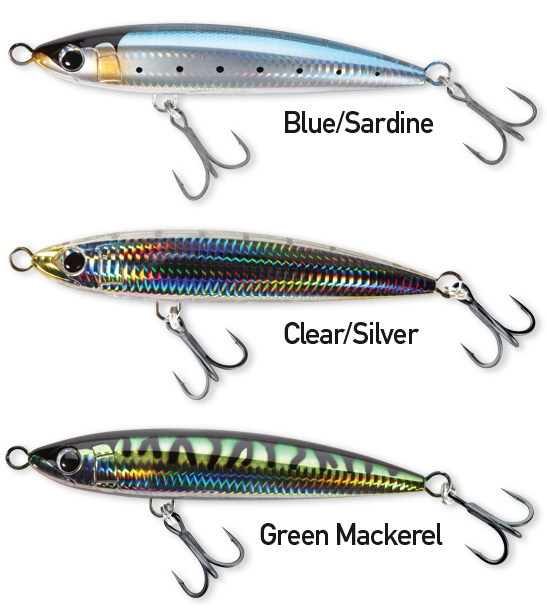
(Looked to me like a lipless loaded Redfin, with upgraded hardware, but
about $30 a pop.)
I took the stick bait and casted from the port side. Another took a large
popping plug to the bow. A third was jigging deep with a large metal. The
intention was to have all the bases covered.
We all know why they call it fishing: Some days we can’t arrested. Some
days we pick. Some days we do better than pick. But leave it to the fish
gods to always know just when to throw us that one day that seems to make
up for all the rest.
Little did I know it was going to be one of those days, and that we would
be “done” by 9am.
I had no clue. To be perfectly honest, I had no friggin’ idea whatsoever
that a yellowfin was following the popping plug up in the bow.
“Oh shit,” screamed John. “Keep popping… shit… oh man… Oh F***… look at
him… shit… eat it… eat it… eat it…”
Ok, I didn’t see the tuna, but I sure did see the explosion when the 40
pound class fish finally grabbed the popping plug.
My own “DUH” moment came about 30 seconds later, when it dawned on me a
yellowfin might very well be following my own stick bait too. Another
explosion of whitewater 50 feet from the boat confirmed the obvious – and
now I was on too. Now our poor captain had two reels with drags singing and
fish running all over the place.
“Oh man, I love that sound,“ screamed John.
And then there were three – yes by the time the first tuna came boat-side,
next went the jigging rod.
I’ll spare you the pain and simply say that we circled the same general
area and sight casted to fish on the surface for the next couple of hours.
Many of those fish were quite eager to eat. The knots were fresh, the hooks
were sharp, the drags were set properly, and the anglers pretty much all
knew how to fight fish. That meant most fish made it into the boat.
By 9am the conservation voice in John kicked in.
“Guys, we now have enough fish in the box to feed you and your families for
quite some time, and besides, I don’t want to be cleaning fish all night
either,” he announced. “If you want to kill another fish, let me know,
otherwise I’m not gaffing anymore.”
That was quite all right with all of us. As hard as it is for me to think
about letting sushi and blackened Cajun tuna steaks go, it was stupid to
argue we needed more.
Truth be told, yes I did pick up on spotting a fish “pushing water,” and I
finally did notice the slight ripples of tuna up on the surface.
This was fishing 50 miles from shore, but the visual was so much like the
surf. See a swirl, cast to it, and then pop that lure. This was basically
surfcasting – only no land in sight, no crowds, and very few boats. (Until
John shared the numbers with a few Captains, there were NO boats).
By now I was looking to get creative. What else could we get them to eat?
While my buddies continued with the poppers, I convinced myself to switch
to the fly rod for the balance of the day. Sure, I knew it would be much
harder, but as another friend of mine once said, “You can’t get that dream
fish on a fly rod unless you’ve actually got a fly rod in your hands.”
Luckily I didn’t have to wait long to connect. Based on the amount of
backing taken off the reel, I never would have known it would turn out to
be an Ablie, but a supersized one at that. Some that day were pushing 15
pounds. I finally did get a school bluefin, and a buddy got a yellowfin,
before most of the fish got finicky around mid-day.

The rest of the afternnon I gave the Van Staal C Vex drag a workout with
the big Albies as well as Skip Jack Tuna (which pound for pound were quite
a bit stronger than even the super sized Ablies). The C Vex was up for the
task, and my Bimini and leaders help up as well. (Maybe I should tie all my
leaders after a few glasses of wine?).
We came upon a floating piece of wood that yielded a few Mahi, but by 3pm
we were all tired and sun burned and more than ready to head back in.
The very last cast yielded a 60 pound yellowfin on a popper, and despite
the fact that there were now signs the fish were turning back on again, we
had plenty of fish to clean, plenty of sushi for now, and steaks for the
fall.
 In case you are wondering, yes I did fall asleep in the bean bag chair on
In case you are wondering, yes I did fall asleep in the bean bag chair on
the way in.
Despite Labor Day being upon us, the offshore calendar still has plenty
more to go.
John will be alternating between inshore bass and offshore tuna in the
fall, as long as the fishing holds up.
If interested, check his web site
www.nycflyfishing.com

